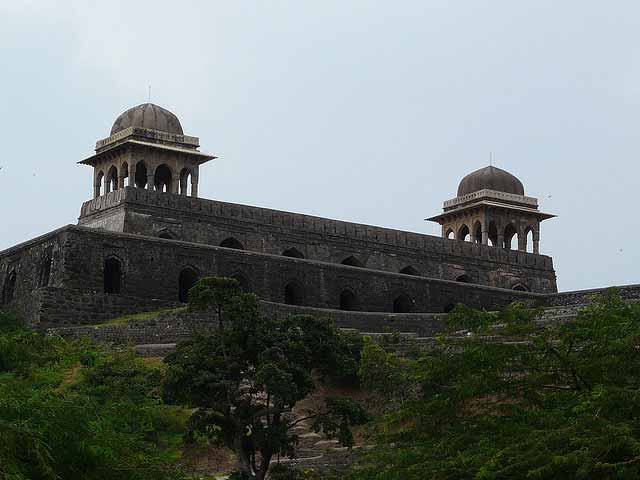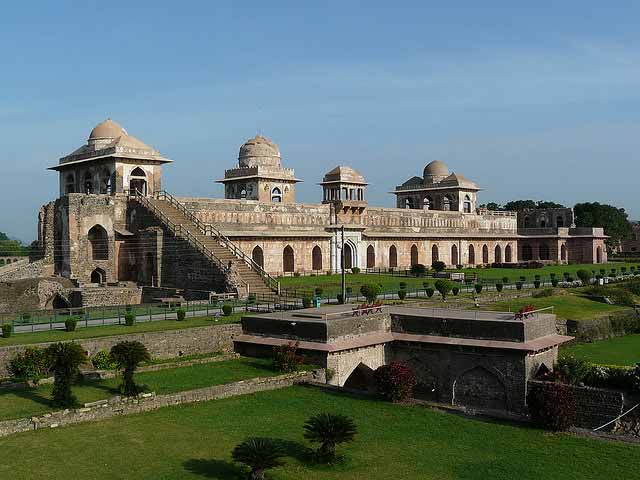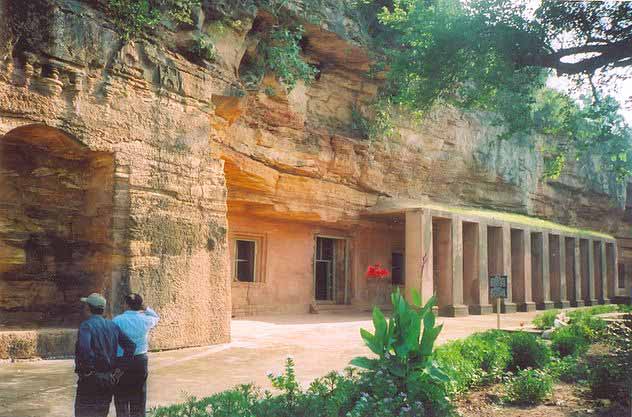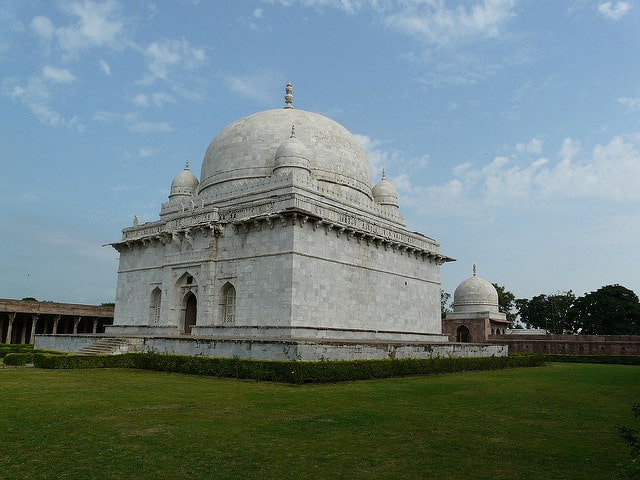The remnants of the past speak volumes about the glorious era that was once witnessed. Mandu or Mandavgarh in Madhya Pradesh is a deserted town that was once home to the Mughals. With a gleam of Afghani architecture in form of lavish palaces and beautiful lakes, stood tall back in time and now exhibit crumbling walls of the same. Declared as a World Heritage Site by UNESCO, Mandu sits over a plateau and is enclosed by walls and has twelve gateways. Due to its geographical location the place demonstrates an exceptional natural defence and hence was a military outpost in the older times. Dotted with palaces, mosques, tombs and gardens Mandu is a fine example of the rich heritage of India. Enlisted here are five astounding places that cannot be missed while in Mandu.
1. Roopmati’s Pavilion

Photo by Varun Shiv Kapur, CC BY 2.0
Roopmati’s Pavilion is one of the most romantic palaces of the bygone days that speak the romantic history of Baz Bahadur and his beloved Roopmati. Overlooking the Narmada River and the Nimar plains and gazing at the Baz Bahadur Mahal, this place was first built for the army as an observation post. Rani Roopmati had an affinity towards this place and hence it is named after her. The grandeur is built with arched structures and had undergone various phases of construction during the entire Mughal reign. The palace also has a cistern that is useful for rain water harvesting. Roopmati Palace is most popular tourist attraction of Mandu.
2. Jahaz Mahal

Photo by Varun Shiv Kapur, CC BY 2.0
Jahaz Mahal is a rectangular edifice that stands between the lakes of Kapur and Munj giving an illusion of a ship. The construction of this place has been a dilemma as it shows architectural artistry of different rulers. The palace is a two-storied building that was made so as to allow the west wind to keep the palace cool during the summer months. Jahaz Mahal was also used as a harem, a residential place for the Ruler’s wives and female servants. The palace is built with colourful stones for enhancing the beauty of the structure.
3. Nilkanth Mahal
Nilkanth Mahal gets its name from being in the vicinity of the Nilkanth Shrine. The shrine is dedicated to Lord Shiva. This palace was built by a Mughal governor during Akbar’s rule and was especially constructed for his wife who was a Hindu. The main room of the palace is now a place of worship by the Hindus as it contains images of Lord Shiva and a Trishul. The walls of the palace have inscriptions from the reign of Akbar and hence speak about the glorious Mughal period that was witnessed by the Nilkanth Mahal.
4. Bagh Caves

Photo by LRBurdak, CC BY-SA 3.0
Much earlier than the Mughal reign came to exist in Mandu these caves have been a part of town. Bagh Caves show an architectural style of late fifth century. These caves were initially a set of nine caves out of which only five subsists. Showing a heavy affluence of the Buddhist architecture, Bagh caves were artificial caves which were skilfully carved out in the Vindhya Range. The caves display beautiful paintings that were painted by some renowned artists of those days. The fourth cave of the Bagh Caves is the most important and beautiful one as it has some beautiful murals and paintings that speak about the artistic glory of that era. The fourth cave is also called as the Rang Mahal or the Palace of Colours, which is another interesting place to visit.
5. Hoshang Shah’s Tomb

Photo by Varun Shiv Kapur, CC BY 2.0
Entitled to be India’s first marble structure, Hoshang Shah’s Tomb is an artistic marvel of the Afghan architecture. With beautiful marble lattice that is renowned for its complexity, the rectangular towers and massive courts are an example of a well-planned architecture. The dome of the tomb is perfectly defined and captivates the attention of its visitor. This tomb was so impressive during its own time that it also served as an inspiration for the Majestic Taj Mahal. The casketed sarcophagus of Hoshang Shah is the centre of attraction. Some others have also been buried under the same dome of which only three of them are in marble. The tomb is a reflection of the Indo-Islamic architecture.
Mandu being richly blessed with so many heritage sites that speak of the past and shows an evolution of architectural styles. With such treasures that this place possesses it also gives subtle impressions of our ancestral legacy.
Also Checkout These Hot Destinations In Madhya Pradesh:

